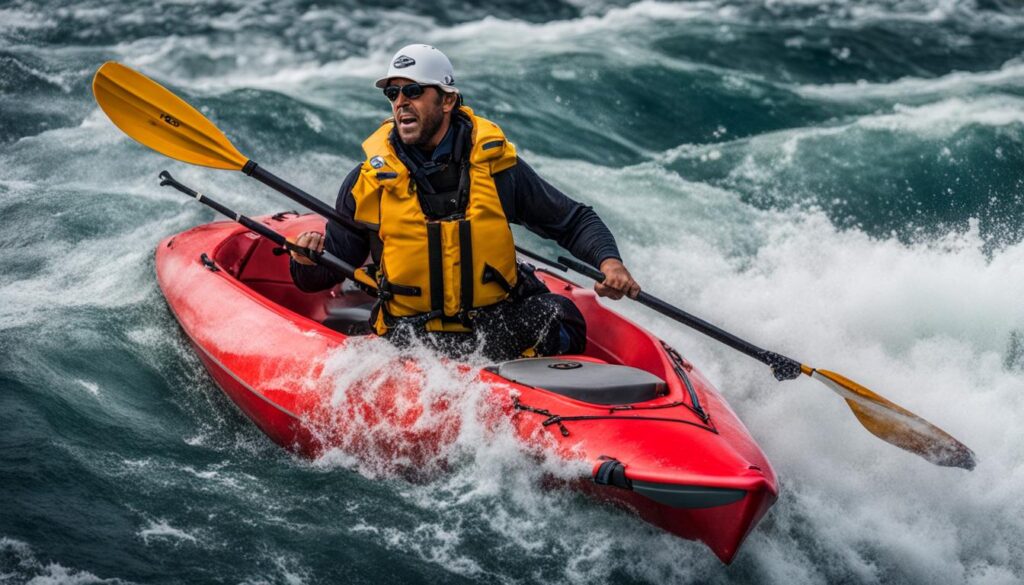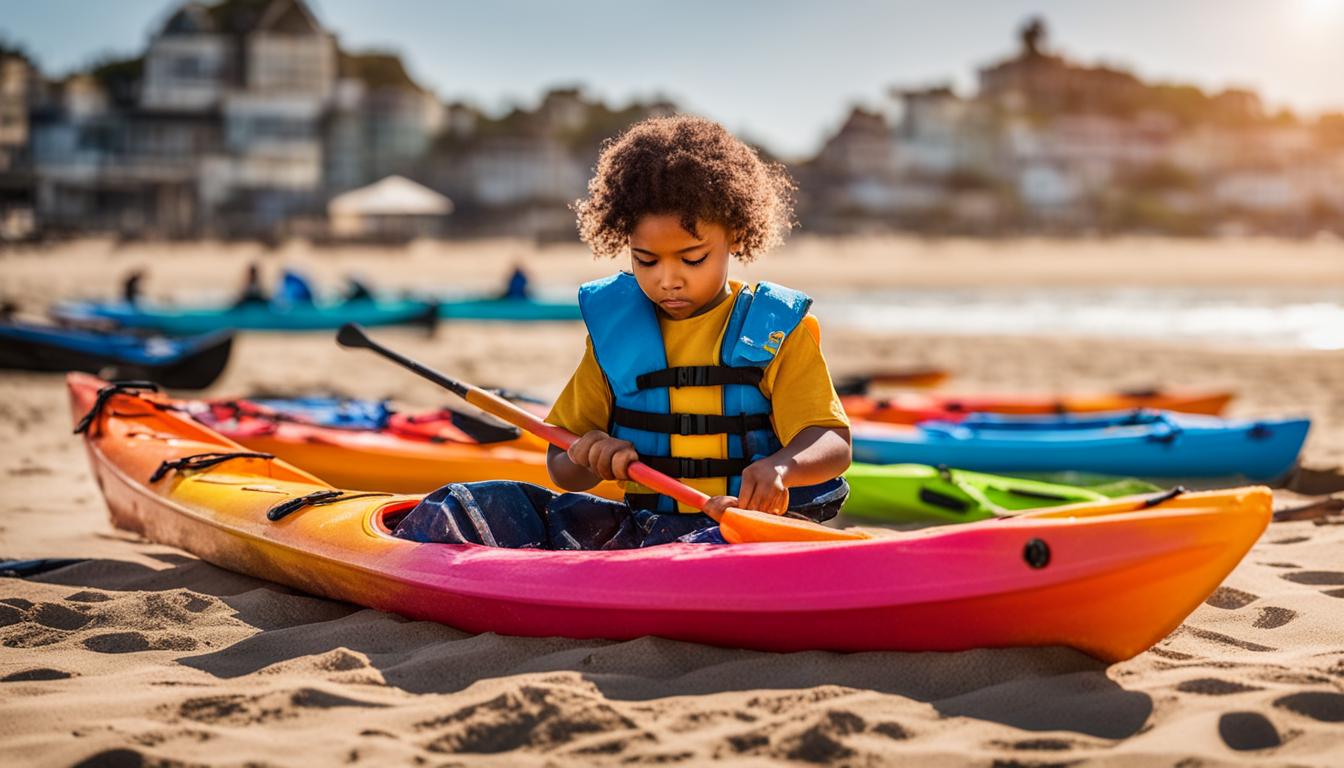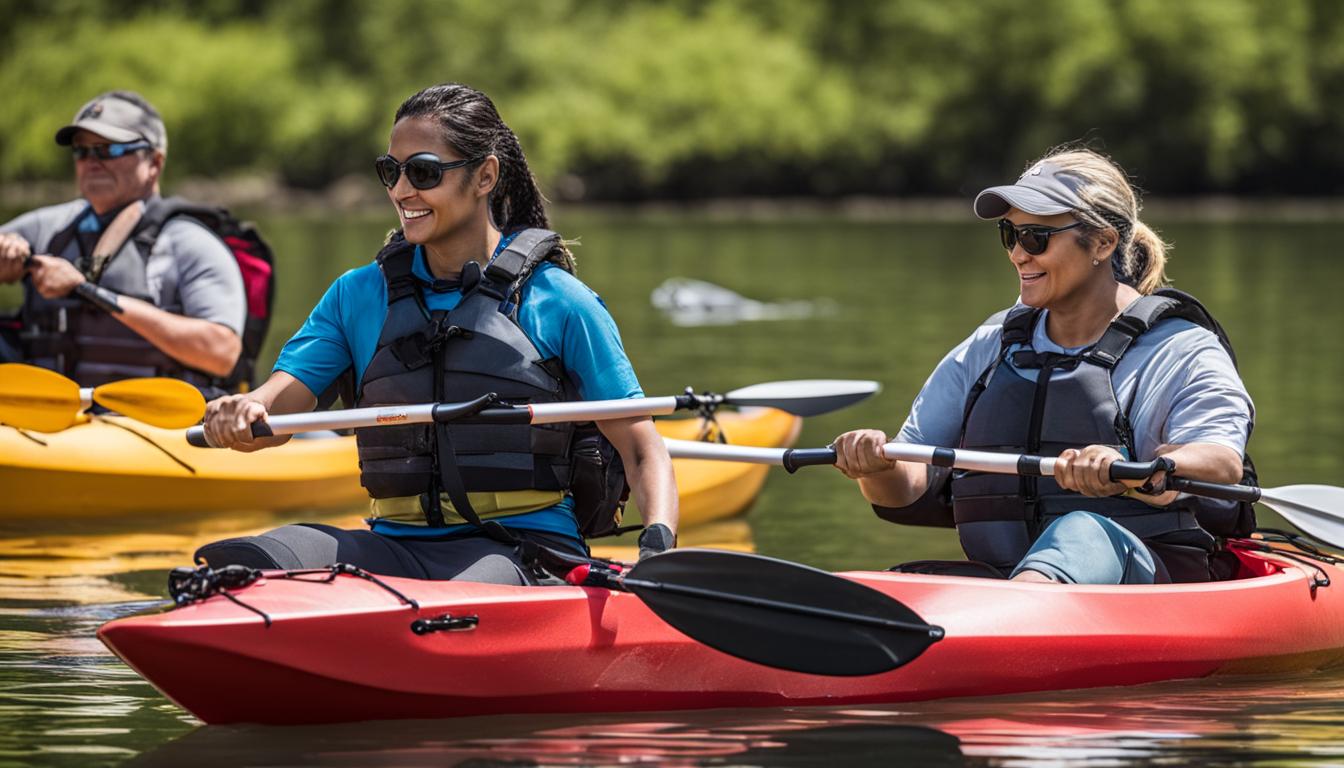Welcome, kayak instructors! As you guide eager adventurers through the thrill of kayaking, it’s crucial to prioritize safety and protect yourself from potential risks. In this section, we will explore the importance of insurance and professional affiliations for kayak instructors, offering you valuable insights on securing the right coverage and joining relevant organizations.
When it comes to insurance, it serves as a safeguard against accidents, injuries, and property damage. By customizing policies to suit your specific needs, you can find comprehensive coverage options, including general liability, accident coverage, and even protection against claims of sex abuse/molestation liability and non-owned and hired auto liability.
Moreover, joining professional kayak organizations can provide you with a wealth of resources and networking opportunities. These affiliations can enhance your skills, knowledge, and reputation within the kayak instructor community, ultimately benefiting both you and your students.
Key Takeaways:
- Insurance is crucial for kayak instructors to mitigate risks and protect against accidents, injuries, and property damage.
- Customize your insurance policy to include general liability, accident coverage, and liability protection for sex abuse/molestation and non-owned and hired auto liability.
- Join professional kayak organizations to gain access to valuable resources and networking opportunities.
- Affiliations with kayak organizations can enhance your skills, knowledge, and reputation as an instructor.
- Make informed decisions about insurance and affiliations to prioritize safety and professionalism in your kayak teaching career.
Risks and Risk Management for Kayak Instructors
Kayaking is an exhilarating outdoor activity that allows individuals to explore and appreciate the beauty of nature. However, like any adventure sport, kayaking comes with inherent risks that both participants and instructors must be aware of. As a kayak instructor, it is crucial to understand these risks and implement effective risk management strategies to ensure the safety and well-being of your students.
One of the main risks of kayaking is the potential for accidents, including collisions with other watercraft or objects, as well as capsizing. Adverse weather conditions, such as high winds or strong currents, can also pose significant risks. To manage these risks, it is essential to conduct regular safety inspections of equipment and replace any damaged or worn-out gear. Developing and following emergency plans that outline procedures for various scenarios is also crucial in minimizing potential harm.
Additionally, as a kayak instructor, you must prioritize safety by enforcing and reinforcing proper safety protocols with your students. This includes ensuring that all participants wear properly fitted life vests and helmets, as well as providing instruction on how to use them correctly. Regularly monitoring the health and skill levels of your students and making necessary adjustments to the difficulty and intensity of the activities can also help mitigate risks.
To further enhance safety measures, it is advisable to carry a well-stocked first aid kit and bring along extra equipment, such as paddles and flotation devices. By being prepared for unforeseen circumstances, you can effectively manage potential risks and promptly respond to any emergencies that may arise during your kayaking sessions.

Key Risk Management Measures for Kayak Instructors:
- Regular safety inspections of equipment and gear
- Developing and following emergency plans
- Enforcing proper safety protocols, including the use of life vests and helmets
- Monitoring student health and skill levels
- Carrying a well-stocked first aid kit
- Bringing extra equipment for unforeseen circumstances
By implementing these risk management strategies and prioritizing the safety of your students, you can create a positive and secure environment for enjoyable and memorable kayaking experiences.
The Importance of Kayak Instructor Insurance
As a kayak instructor, you play a vital role in teaching and guiding others in the thrilling world of kayaking. However, it’s essential to recognize the potential risks involved and the importance of protecting yourself with proper insurance coverage.
There are various types of insurance specifically designed to meet the unique needs of kayak instructors. Accident insurance provides crucial coverage for any medical expenses that participants may incur during your classes or tours. This ensures that you are financially protected if an accident or injury occurs while under your guidance.
General liability coverage is another crucial aspect of kayak instructor insurance. This type of coverage protects you against claims made by participants or spectators for any injuries they sustain during your activities. It’s crucial to have this coverage in place to safeguard your finances and reputation.
In addition to personal liability coverage, equipment coverage is equally important. Kayaking gear can be expensive, and having insurance that covers loss, theft, or damage to your equipment provides peace of mind. Knowing that you can replace essential gear without shouldering the financial burden is invaluable.
FAQ
What types of insurance coverage do kayak instructors need?
Kayak instructors need general liability coverage, accident coverage, coverage for sex abuse/molestation, and non-owned and hired auto liability coverage.
Why is insurance important for kayak instructors?
Insurance is important for kayak instructors because it helps mitigate the financial losses that can result from accidents, injuries, and property damage.
What resources and networking opportunities can joining professional kayak organizations provide for instructors?
Joining professional kayak organizations can provide important resources and networking opportunities for instructors, allowing them to connect with other professionals in the industry and access valuable information.
What are some risks that kayak instructors need to manage?
Kayak instructors need to manage risks such as collisions, capsizing, adverse weather conditions, and incorrect use of life vests.
What safety measures should kayak instructors take?
Kayak instructors should inspect and replace equipment regularly, make and follow plans for emergencies, use repetition to reinforce safety protocols, double-check helmets and life vests, carry a first aid kit, bring extra equipment, monitor student health, and make adjustments based on individual skill levels.
What types of insurance coverage are available for kayak instructors?
Kayak instructors can obtain accident insurance to help cover medical expenses for injured participants, general liability coverage to protect against claims of participant and spectator injuries, and equipment coverage to protect against loss, theft, or damage to kayaking gear.
How can kayak instructors obtain insurance?
Kayak instructors can obtain insurance through specialized companies like Sadler & Company, who offer customizable policies tailored to the needs of kayak instructors.





